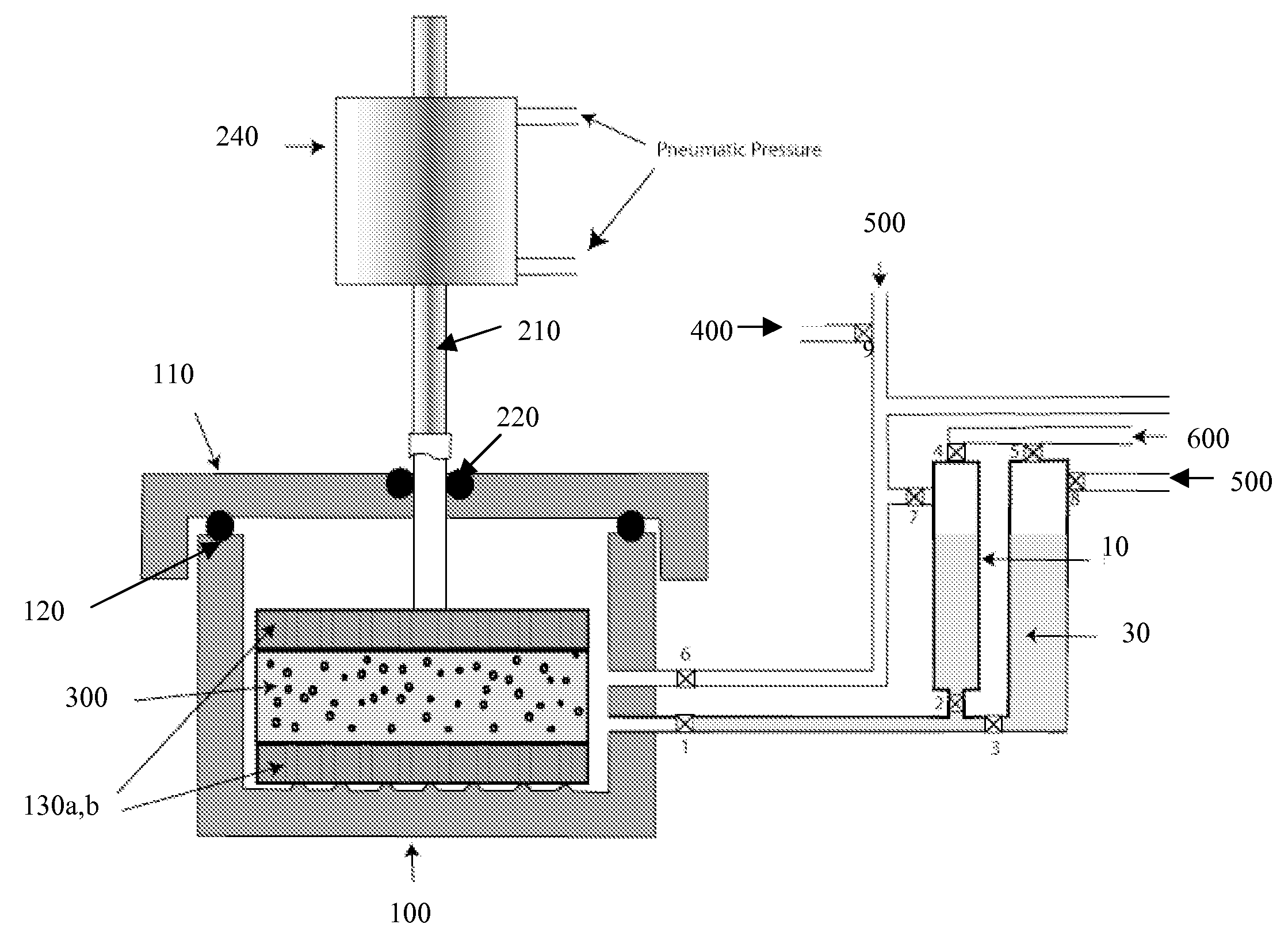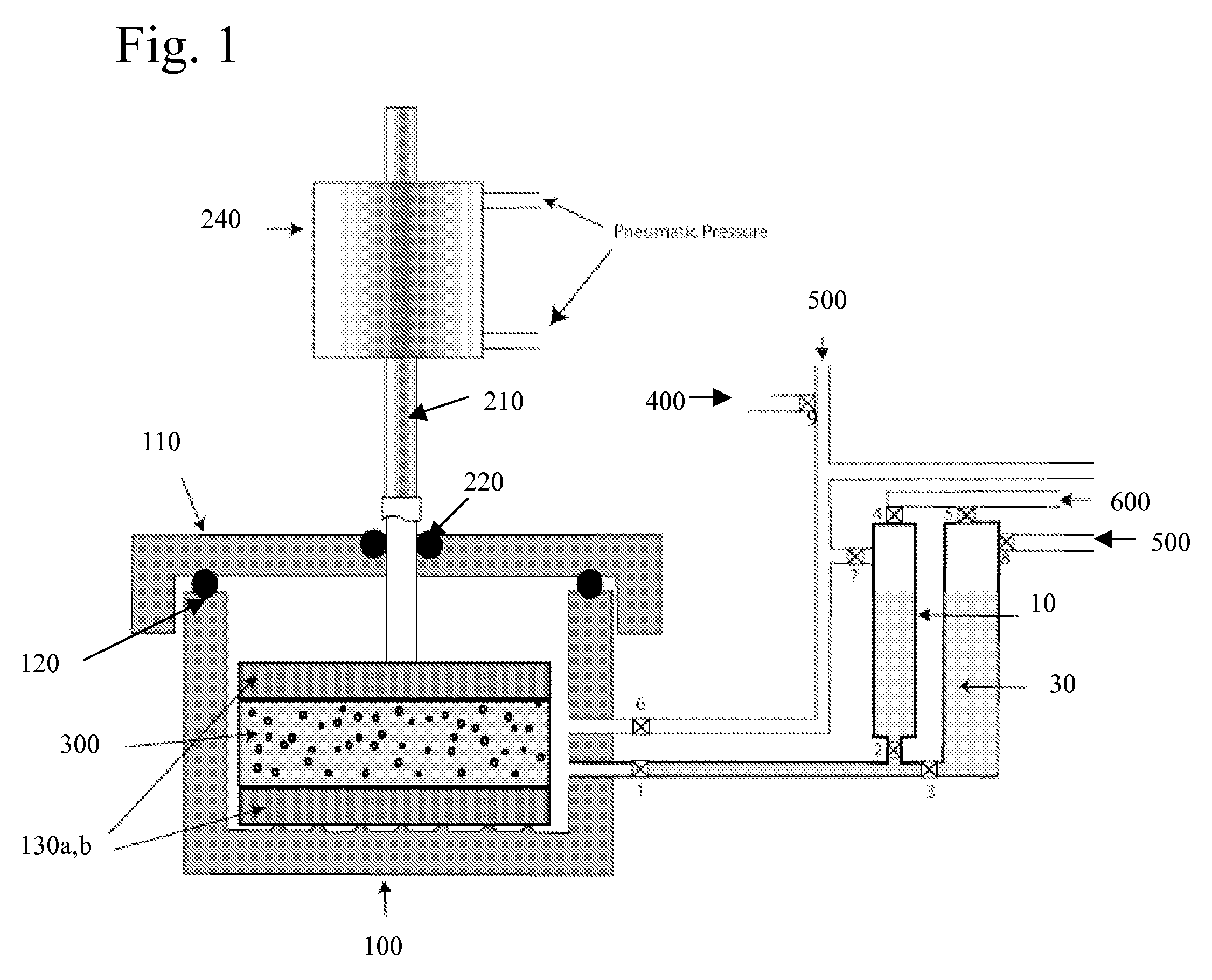Compression vacuapore for determination of pore structure characteristics of hydrophobic materials under compressive stress
a hydrophobic material and vacuapore technology, applied in the direction of permeability/surface area analysis, suspension and porous material analysis, instruments, etc., can solve the problems of mercury intrusion porosimetry having a number of limitations, distorting the pore structure, and no available technique for measuring in-plane pore volume, etc., to achieve accurate pore structure characterization
- Summary
- Abstract
- Description
- Claims
- Application Information
AI Technical Summary
Benefits of technology
Problems solved by technology
Method used
Image
Examples
Embodiment Construction
[0031]The following description relates to certain preferred embodiments of an apparatus and method for using water intrusion compression porosimetry to determine the pore structure characteristics of hydrophobic porous materials, even while the porous materials are subjected to compressive stress. Numerous variations and modifications, other than those specifically indicated herein, will be readily apparent to those of sufficient skill in the art. In addition, certain terms are used throughout the discussion in order to provide a convenient frame of reference with regard to the accompanying drawings, such as “top”, “bottom”, and the like. However, such terms are not intended to be specifically limiting of the invention, except where so indicated in the claims.
[0032]The invention provides novel technology for using water intrusion compression porosimetry for accurate pore structure characterization of hydrophobic materials under compressive stress, overcoming the disadvantages of th...
PUM
| Property | Measurement | Unit |
|---|---|---|
| pore structure | aaaaa | aaaaa |
| volume | aaaaa | aaaaa |
| pressure | aaaaa | aaaaa |
Abstract
Description
Claims
Application Information
 Login to View More
Login to View More - R&D
- Intellectual Property
- Life Sciences
- Materials
- Tech Scout
- Unparalleled Data Quality
- Higher Quality Content
- 60% Fewer Hallucinations
Browse by: Latest US Patents, China's latest patents, Technical Efficacy Thesaurus, Application Domain, Technology Topic, Popular Technical Reports.
© 2025 PatSnap. All rights reserved.Legal|Privacy policy|Modern Slavery Act Transparency Statement|Sitemap|About US| Contact US: help@patsnap.com


